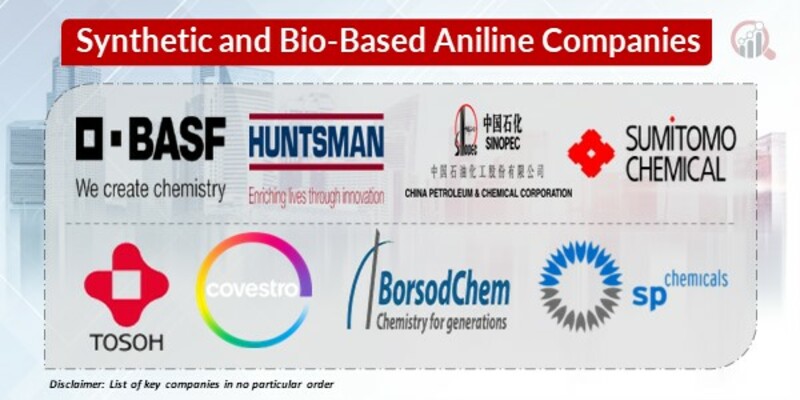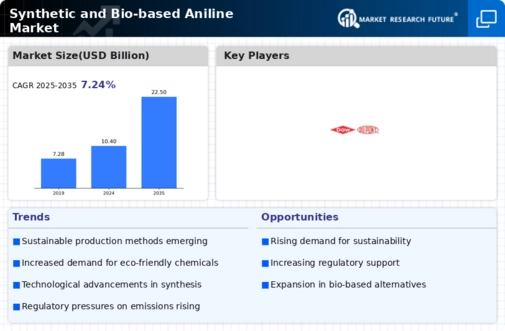Top Industry Leaders in the Synthetic Bio-Based Aniline Market
 The global aniline market, encompassing both synthetic and bio-based variants, is a dynamic space with fierce competition in play. Understanding the current landscape, key strategies employed by players, and recent developments is crucial for anyone navigating this ever-evolving arena. So, let's dive into the aromatic depths of this industry.
The global aniline market, encompassing both synthetic and bio-based variants, is a dynamic space with fierce competition in play. Understanding the current landscape, key strategies employed by players, and recent developments is crucial for anyone navigating this ever-evolving arena. So, let's dive into the aromatic depths of this industry.
Market Share Marvels:
-
Global Giants: Chemical behemoths like BASF, Huntsman, and China Petroleum & Chemical Corporation hold significant market shares, leveraging economies of scale and established distribution networks. BASF alone boasts a 20% share, making them the undisputed king of the aniline castle.
-
Regional Retainers: Regional players like GNFC (India) and Borsodchem (Hungary) carve out niches by catering to specific needs and regulations within their geographical confines.
-
Bio-Based Budding: While still nascent, bio-based aniline producers like BioAmber and EcoSynthetics are making inroads, capitalizing on rising sustainability concerns and offering eco-friendly alternatives.
Strategic Maneuvers:
-
Product Prowess: Differentiation through product innovation is key. BASF, for instance, offers high-purity grades for pharmaceutical applications, while Huntsman focuses on cost-effective options for dyes and rubber production.
-
Vertical Integration: Expanding upstream and downstream in the value chain secures supply and cost advantages. Companies like Covestro invest in both benzene production and downstream polymer manufacturing, creating a tight-knit ecosystem.
-
Sustainability Swagger: The green wave is washing over the market. Investments in bio-based technologies, eco-efficient production processes, and partnerships with recycling initiatives are becoming strategic imperatives.
Key Players
- BASF SE (Germany)
- Huntsman International LLC. (U.S.)
- (India)
- China Petroleum & Chemical Corporation (China)
- Sumitomo Chemical Co., Ltd. (Japan)
- Tosoh Corporation (Japan)
- Covestro AG (Germany)
- Borsodchem Mchz S.R.O. (Czech Republic)
- SP Chemicals Holdings Ltd. (Singapore)
- Arrow Chemical Group Corp. (China)
- DowDuPont Inc. (U.S.)
Recent Developments :
July 2023: Rising benzene prices, a key raw material for synthetic aniline, lead to price hikes across the board, squeezing profit margins for manufacturers and impacting downstream industries.
September 2023: A fire at a major Chinese aniline plant disrupts supply chains and triggers temporary shortages, prompting a scramble for alternative sources and highlighting the vulnerability of geographically concentrated production.
November 2023: A breakthrough in enzyme technology enables efficient conversion of biomass into aniline, potentially paving the way for a more sustainable and cost-competitive bio-based industry.









